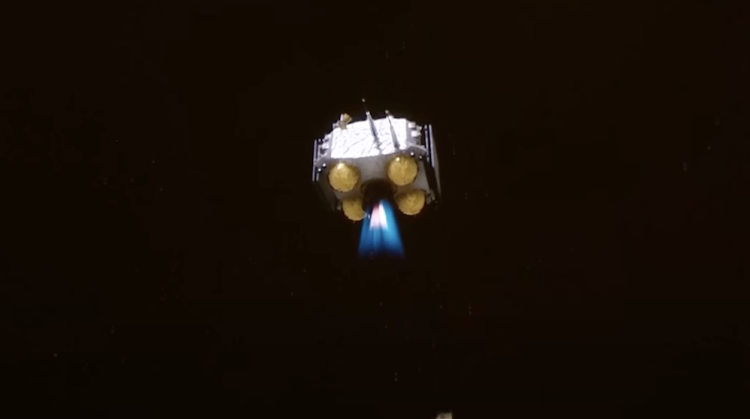China has announced a groundbreaking achievement in space exploration as its lunar probe successfully launched from the far side of the Moon and commenced its journey back to Earth. This historic mission marks the first time a sample has been collected from this region of the Moon.
The Chang’e-6 spacecraft module, named after the Moon goddess from Chinese mythology, achieved a successful landing near the lunar south pole on Sunday. This remarkable feat has been celebrated by the international scientific community. China remains the only nation to have successfully landed on the Moon’s far side, having first accomplished this in 2019.
The China National Space Administration (CNSA) hailed the mission as an “unprecedented feat in human lunar exploration.” The far side of the Moon, which is perpetually oriented away from Earth, presents significant technical challenges due to its rugged terrain and deep craters. The mission’s goal is to be the first to return rock and soil samples from this area to Earth. State media released footage showing the robotic spacecraft waving a flag with its arm after collecting the precious samples.
Earlier today, the module successfully launched from the lunar surface and entered lunar orbit. The probe is expected to travel to Earth over the next three weeks, with its landing site designated in Inner Mongolia. Chinese scientists will be the first to analyze the samples, with international researchers able to apply for access subsequently.
Excitement surrounds these samples, as they may include some of the oldest material from the vast South Pole-Aitken basin, one of the largest craters in the Solar System. The landing was particularly risky due to the communication challenges posed by the Moon’s far side.
The mission aimed to collect approximately two kilograms of material using a drill and a mechanical arm. These samples could provide critical insights into the formation of planets. The Moon’s south pole represents the next frontier for lunar missions, with nations eager to explore this region due to the high likelihood of ice presence.
The availability of water would significantly enhance the prospects of establishing a human base on the Moon for scientific research.
This mission is China’s second effort to collect samples from the Moon. In 2020, the Chang’e 5 spacecraft returned with 1.7 kilograms of material from the Oceanus Procellarum region on the near side of the Moon.
Additionally, in 2019, China made history by being the first country to land on the Moon’s far side with the Chang’e 4 mission.
Looking ahead, China plans to conduct three more unmanned lunar missions this decade as it continues to search for water and explore the potential for establishing a permanent lunar base. Beijing also has ambitions to send astronauts to the Moon’s surface around 2030. The United States aims to achieve a similar milestone with NASA’s Artemis-3 mission, planned for 2026.









